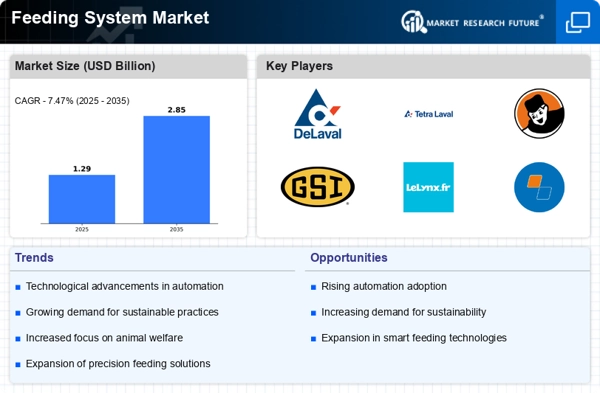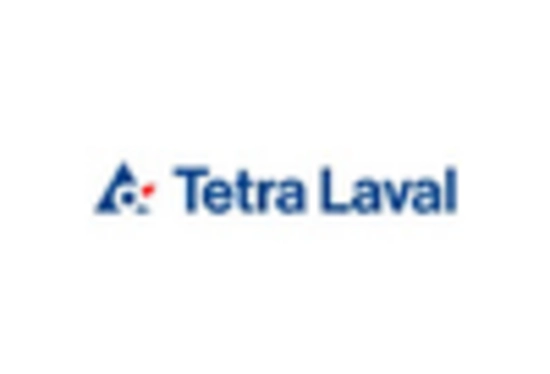Market Analysis
In-depth Analysis of Feeding System Market Industry Landscape
The Feeding System Market is characterized by a complex interplay of market dynamics that shape its overall landscape. One of the key driving forces is the ever-growing global population, leading to an increased demand for food products. This surge in demand places considerable pressure on the agricultural sector, driving the adoption of advanced feeding systems to enhance efficiency in livestock and poultry farming. As the world strives to produce more food to meet the needs of a growing population, the Feeding System Market experiences a continuous push for innovation and technological advancements to optimize feeding practices.
Moreover, changing consumer preferences and awareness about the quality of animal products have become influential factors in the market dynamics. Consumers are increasingly concerned about the source and nutritional content of the food they consume. This heightened awareness translates into a demand for high-quality and responsibly produced meat, milk, and other animal products. In response, the Feeding System Market witnesses a shift towards precision feeding and nutritional customization, where farmers and livestock producers utilize advanced feeding systems to ensure the health and optimal growth of their animals. This trend aligns with broader consumer expectations for transparency and ethical practices in the agricultural industry.
Technological advancements play a pivotal role in shaping the dynamics of the Feeding System Market. The integration of automation, smart sensors, and data analytics has revolutionized feeding practices in agriculture. Automated feeding systems not only streamline the feeding process but also contribute to resource efficiency and cost-effectiveness. Precision feeding, enabled by technology, allows farmers to tailor nutritional plans for different livestock, minimizing waste and optimizing resource utilization. The constant evolution of technology in the Feeding System Market reflects the industry's commitment to staying at the forefront of innovation to meet the challenges of modern agriculture.
Economic factors also significantly influence the market dynamics of the Feeding System Market. Fluctuations in commodity prices, availability of feed ingredients, and overall economic conditions impact the purchasing power of farmers and livestock producers. Economic challenges can lead to shifts in buying behavior, with an emphasis on cost-effective solutions. Therefore, market players need to navigate these economic factors strategically, offering feeding systems that balance affordability with performance to cater to the diverse needs of the agricultural community.
Government policies and regulations are additional factors shaping the dynamics of the Feeding System Market. Subsidies, incentives, and regulatory frameworks related to agriculture and animal husbandry can either spur or impede the adoption of advanced feeding systems. The alignment of feeding practices with governmental guidelines and sustainability initiatives becomes crucial for market players to thrive in a regulatory environment that emphasizes responsible farming practices.
Environmental considerations also play a growing role in market dynamics. Sustainable and eco-friendly feeding systems are becoming increasingly popular as the agricultural industry faces scrutiny for its environmental impact. Market players are responding by developing solutions that promote efficient resource utilization, minimize waste, and reduce the carbon footprint. This emphasis on environmental responsibility reflects a broader trend towards sustainable agriculture and influences the choices made by farmers and livestock producers in selecting feeding systems.








Leave a Comment